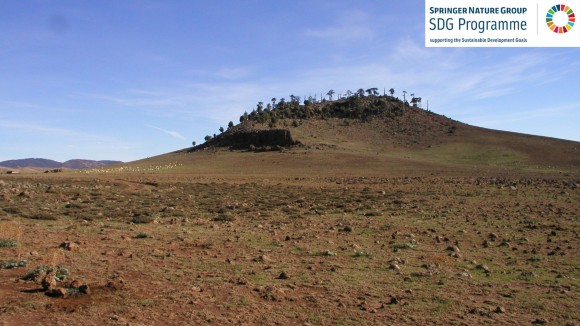Nature Communications is edited by in-house professional editors.
Scientific Reports is managed by in-house professional editors and edited by Editorial Board Members. For this collection Dr João Leite and members of the Editorial Board are in charge of submissions to Scientific Reports.
Our editors work closely together to ensure the quality of our published papers and consistency in author experience.
 Prof. Thulani Makhalanyane, PhD, Department of Microbiology and The School of Data Science and Computational Thinking at Stellenbosch University (SU)
Prof. Thulani Makhalanyane, PhD, Department of Microbiology and The School of Data Science and Computational Thinking at Stellenbosch University (SU)
Professor Thulani Makhalanyane graduated from the University of the Western Cape, where he completed his postgraduate training (MSc cum laude 2009, PhD 2013). Post-PhD he moved to the University of Pretoria (UP) in 2013. In the ensuing period, his research has focused almost entirely on understanding the ecology of microbial communities in various niches. These niches include human gut microbiome, and studies aimed at elucidating the effects of rural vs urban locality.
 Yolanda Pueyo, PhD, Biodiversity and Restoration Department of the Pyrenean Institute of Ecology (IPE-CSIC, Spain)
Yolanda Pueyo, PhD, Biodiversity and Restoration Department of the Pyrenean Institute of Ecology (IPE-CSIC, Spain)
Dr. Yolanda Pueyo's research focuses on terrestrial ecosystems, focusing on grazing systems, arid environments, and gypsum ecosystems. Her work explores plant-plant and plant-soil interactions, with a current emphasis on understanding how human activities, particularly livestock grazing, impact these interactions and shape plant community composition. Through a multi-faceted approach, combining field studies, greenhouse experiments, GIS tools, remote sensing, and eco-hydrological models, she seeks to provide insights for sustainable grazing management and tools for ecological restoration in degraded areas. Dr. Pueyo serves as an associate editor for Regional Environmental Change and Pirineos.
 Joaquín Hortal, PhD, Department of Biogeography and Global Change of the Spanish Museo Nacional de Ciencias Naturales (MNCN-CSIC)
Joaquín Hortal, PhD, Department of Biogeography and Global Change of the Spanish Museo Nacional de Ciencias Naturales (MNCN-CSIC)
Dr Joaquín Hortal is the Editor-in-Chief of npj Biodiversity. Before joining the Spanish Museo Nacional de Ciencias Naturales (MNCN-CSIC), Dr Joaquín Hortal conducted research at universities in the Azores (Portugal), Copenhagen (Denmark), Imperial College London at Silwood Park (UK), and Federal de Goiás (Brazil). His focus is on understanding the spatial and temporal distribution of biodiversity, emphasizing the processes driving ecological assemblage dynamics. His current work aims to unify hypotheses about the origin of geographic gradients of biodiversity, exploring the interplay of niche and coexistence, evolutionary history, glaciations, and current climate. Additionally, Dr Joaquín Hortal works on assessing and addressing data-driven uncertainty in biodiversity analyses.

